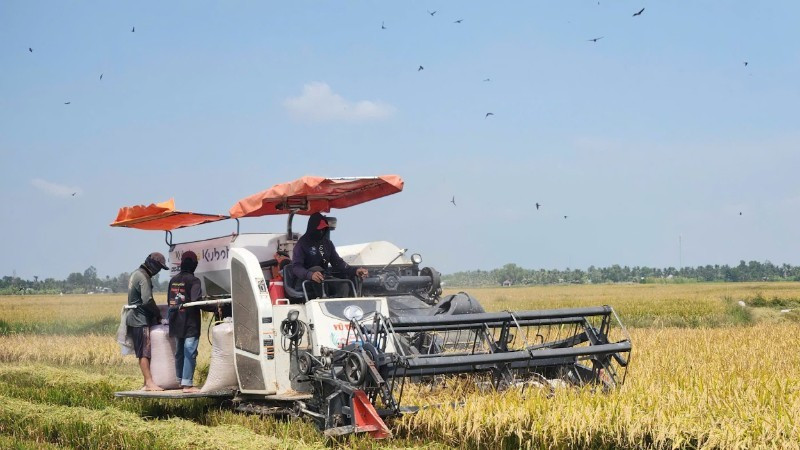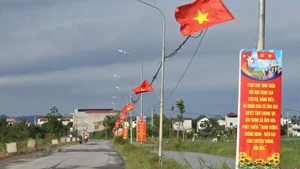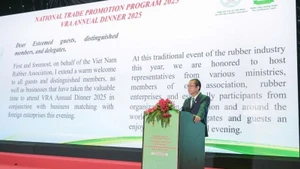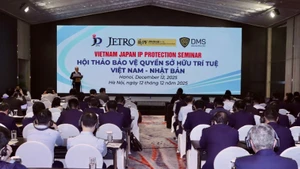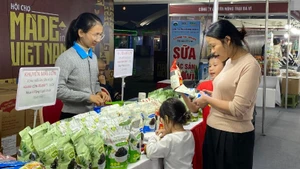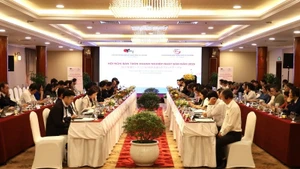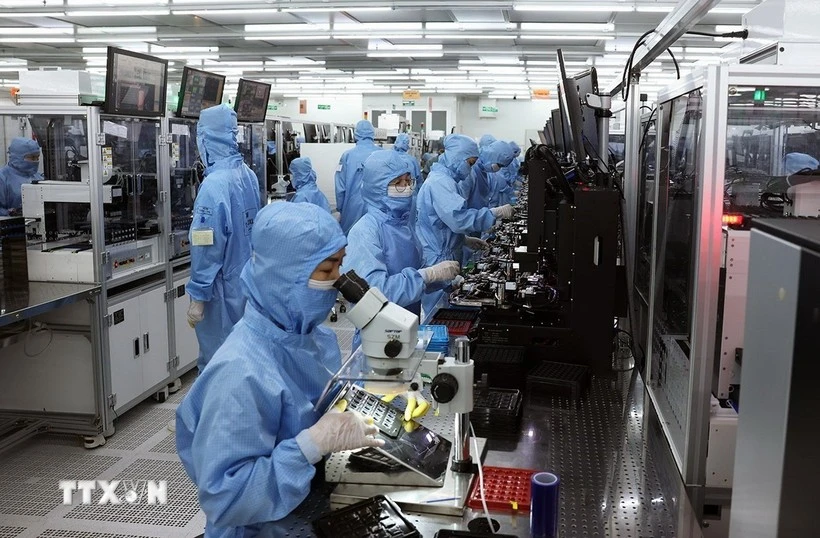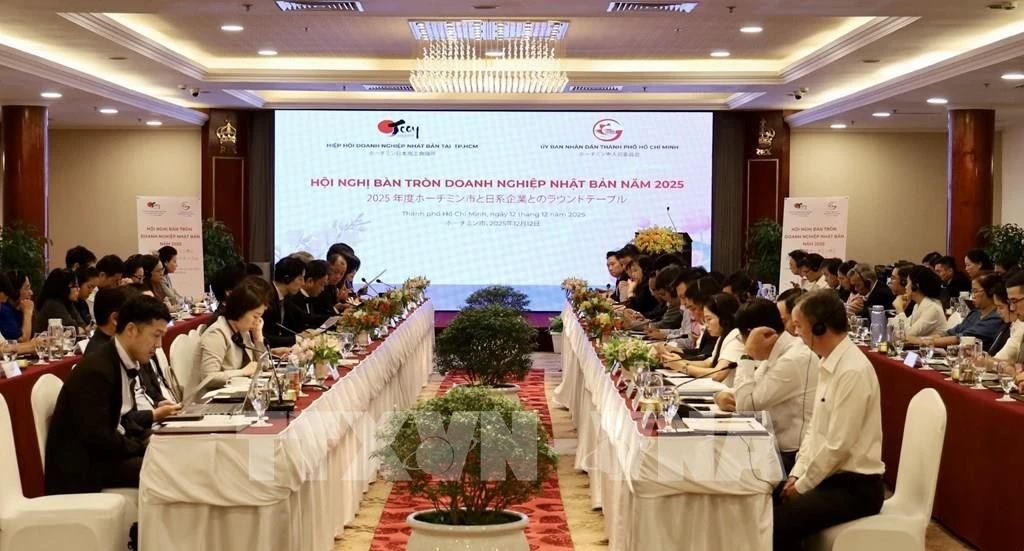Following administrative merger, the Long Xuyen Quadrangle now lies within An Giang Province and part of Can Tho City, covering a total area of around 490,000 hectares. This region is considered one of the largest rice-producing areas in the Mekong Delta and in Viet Nam as a whole.
When the land gives its name to the people
In April 1997, in Lac Quoi Commune, Tri Ton District (now Ba Chuc Commune, An Giang Province), the T5 canal broke ground after several site inspections by Prime Minister Vo Van Kiet. Spanning 48km, the T5 canal connects Vinh Te Canal through communes including Vinh Gia, Hoa Dien and Binh Giang before merging into the Rach Gia–Ha Tien Canal and flowing out to the southwest sea.
Alongside the T5, other main canals such as T4, T6, and several trunk canals were developed with the mission of flushing out acidity, leaching alum, and distributing alluvium across the region.
Huynh Loc Dung (68 years old), former Vice Chairman of the People's Committee of the former Lac Quoi Commune (now Ba Chuc), recalled: “This area used to be wasteland, heavily contaminated with alum. The vast fields were covered in melaleuca, bulrush and reeds, with little economic value.”
“The decision to dig the T5 canal by Prime Minister Vo Van Kiet changed everything, bringing prosperity to the people,” Dung shared.
The T5 canal averages 30 metres in width and 3 metres in depth, and was completed in roughly 200 days. It turned hundreds of thousands of hectares in the Long Xuyen Quadrangle into fertile farmland. During the rainy season, the canal drains floodwaters into the western sea; during the long dry season, it brings freshwater to irrigate rice fields, fruit orchards, and fish farms.
In gratitude to Prime Minister Vo Van Kiet, An Giang Province built the Vo Van Kiet Cultural Park and statue beside the canal. This canal is now known locally as 'Ong Kiet Canal', joining the legacy of Thoai Ha and Vinh Te Canals,” Dung said.
At the 14th session in 2009, the An Giang Provincial People’s Council passed a resolution renaming the T5 Canal to Vo Van Kiet Canal. As has become customary, every year on 11 June, local residents gather at the Vo Van Kiet Cultural Park, bringing home-grown flowers, fruits, and homemade dishes to commemorate the leader who brought them food and warmth — an expression of their deep respect and gratitude.
From barren soil to blossoming fields
Taking us out to the lush green paddy fields behind the statue of Vo Van Kiet, Huynh Ngoc Anh, a 70-year-old resident of Vinh Thuan Hamlet, Ba Chuc Commune, said: “My four hectares of land are now far more fertile, yielding 8 to 9 tonnes of rice per hectare per crop, or over 70 tonnes of rice per year. Thanks to that, my children have had proper schooling.”
Pham Thi Thu Huong, Party Cell Secretary and Head of Vinh Thuan Hamlet, confirmed: “The living standards of local people have been improved significantly thanks to growing two or even three crops a year. Many households now own assets and have built more spacious homes. Out of 250 households and 952 residents in the hamlet, only two families remain poor.”
Luu Duc Vu, Head of the Economic Division of Ba Chuc Commune, noted that the commune was formed through the merger of the former Lac Quoi, Le Tri communes and Ba Chuc township, now covering 7,091 hectares with 7,044 households and 25,600 residents. Over 25 years ago, the poverty rate across the three former communes was nearly 20%; now it has dropped to just 3.14%.
Travelling along Ong Kiet Canal, we met Tran Van Nguyen, a 53-year-old “barefoot billionaire” from Lung Lon Hamlet, Hoa Dien Commune, carefully inspecting his rice plants.
We learned that after moving from Thoai Son Commune to Hoa Dien just over ten years ago to make a living, Nguyen now owns many rice fields and has even purchased a car worth over 1 billion VND. “Thanks to the Vo Van Kiet Canal, the land was flushed of acidity and could support two rice crops per year. As productivity improved year by year, I became confident enough to acquire more land and expand production — now my annual income is nearly 1 billion VND,” Nguyen said.
In Hon Dat Commune, we came across five or six harvesters conducting mechanised harvesting and straw treatment as part of a pilot model under the programme for 1 million hectares of high-quality, low-emission rice.
Le Tan Duc, Chairman of the Board of Directors of Vinacam Cooperative, said the cooperative is participating in the programme with 50 hectares and 10 members. Statistics show that seed usage has dropped from 120kg per hectare to just 70kg per hectare; and selling prices are around 300 VND per kg, higher than the market rate.
Not far away, Nguyen Thanh Tuan, Director of Tan Thuan Agricultural Cooperative in My Thuan Commune, said: beyond rice profits, the cooperative’s 70 hectares also receive carbon credit payments from Net Zero Carbon Company in coordination with BSB Nanotech, projected to generate an additional 2.5 million VND per hectare.
According to Le Huu Toan, Director of the Department of Agriculture and Environment of An Giang Province, the locality is one of the pioneers in implementing the 1 million hectares of high-quality, low-emission rice initiative.
In 2025, the province registered 144,000 hectares for the programme, with the Long Xuyen Quadrangle as its focal region. “To improve results, we’re strengthening awareness and technical capacity among agricultural extension officers and farmers; enhancing links between businesses, cooperatives, and farmers. In addition, we are also applying digital technology to support carbon credit certification, creating opportunities to access international carbon markets,” he said.
“In the first half of the year, the province achieved a rice output of 4.3 million tonnes with a significant contribution from areas under the 1 million hectare programme, particularly in the Long Xuyen Quadrangle,” Toan noted.
We rode motorbikes along the smooth concrete road named Vo Van Kiet, enjoying the view with the majestic That Son mountain range on one side and lush green fields on the other. From Luong An Tra (now Vinh Gia Commune) to Binh Son Commune and out to National Highway 80, heading to the end of the Vo Van Kiet Canal, small yet bustling markets came into sight.
Along every stretch of canal, acidic water is carried away to the sea, while alluvium is retained to nourish the heavy rice-laden fields. On both sides of the road, rows of sturdy tin-roofed and tiled houses are gradually replacing the old thatched ones.
All this stands as clear evidence that, nearly three decades on, the Vo Van Kiet Canal has transformed the face of the entire region.
